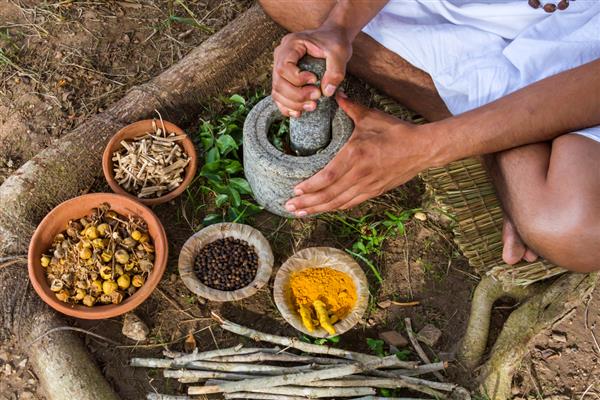Search here

13-Jun-2025 , Updated on 6/15/2025 3:35:03 AM
Ayurveda vs Allopathy: Which Should India Trust More Today?
India has a long history of traditional healing practices, and today, it's at a point where modern medicine and ancient methods meet. The two main approaches—Ayurveda, the traditional Indian practice, and Allopathy, the modern system used worldwide—often come up in discussions about which one people should trust more. Each has its own benefits and drawbacks. In modern India, it's not about picking one over the other; it's about figuring out how each can work best for people's health.
Getting to Know Both Approaches
Ayurveda, which means the science of life, has been around for over 3,000 years. It focuses on keeping balance between body, mind, and spirit, and aims to prevent illness with natural remedies, good diet, lifestyle tweaks, and a bit of spirituality. The treatments often involve herbs and personalized plans based on body types called doshas—which are Vata, Pitta, and Kapha.
On the flip side, Allopathy is based on science and clinical trials. It zeroes in on diagnosing and treating symptoms using drugs, surgeries, and other quick fixes. This method has advanced rapidly thanks to technology and solid research.
What Ayurveda Does Well
One of Ayurveda's main strengths is its focus on prevention and holistic care. It doesn’t just target symptoms; it looks for the root causes of health issues. Many people in India use Ayurveda to manage ongoing conditions like arthritis, digestive problems, and stress.
It's also aligned with a more natural way of living and sustainability, using herbs and yoga, which resonates with the current trend towards organic living. Ayurvedic treatments, when guided properly, often have fewer side effects.
Ayurveda is catching attention worldwide as folks look for alternatives to conventional treatments, especially for lifestyle-related health issues. Its personal approach and long-term focus are appealing to many.
What Allopathy Does Well
On the other hand, Allopathy is essential for immediate care, emergencies, and severe health problems. It provides rapid treatments, accurate diagnoses, and protocols based on solid evidence. For issues like infections, surgeries, or serious injuries, modern medicine is often more effective.
Vaccines, antibiotics, and quick treatments have played a huge role in reducing death rates and improving life expectancy globally. During health crises like COVID-19, Allopathy has been key in testing, treating, and rolling out vaccines at impressive speeds.
Allopathic practices are also standardized and regulated, ensuring consistent care across different populations. It's continually updated thanks to ongoing research and tech improvements.
Limitations of Each Approach
That said, both systems have their downsides. While Ayurveda is great for chronic issues, it can lack consistency. Many treatments aren’t always backed by rigorous scientific testing, and the field can sometimes have quality control problems. Without better regulation and validation, it’s hard to get Ayurveda widely accepted in the public health system.
Allopathy has its issues too. It often focuses on treating symptoms instead of the root causes. Many drugs come with side effects, and relying too much on medication can lead to problems like antibiotic resistance. Allopathy can also be pricey and hard to access for people in rural or low-income areas.
Public Opinion in India
In India, people have a strong trust in Ayurveda because it’s familiar, used across generations, and often tied to spiritual beliefs. Many still use traditional remedies, especially in rural areas where modern healthcare options are limited.
In cities, people generally lean more towards Allopathy for quick fixes, particularly in emergencies. In health crises, hospitals and allopathic professionals are the go-to option.
Recent surveys show an increasing interest in combining these approaches, using Ayurveda for prevention and wellness, and Allopathy for serious health needs. The Indian government is supporting this collaboration through the Ministry of AYUSH, aiming to create a healthcare system that uses the best of both.
Towards a Combined Approach
Instead of choosing one over the other, India should aim for a combined healthcare model that allows traditional and modern practices to work together. Validating Ayurvedic methods with scientific research can help build trust and credibility.
Medical education should encourage learning from both sides, allowing Ayurvedic practitioners to understand modern diagnostics and vice versa. This can help create a culture of respect and teamwork instead of competition.
Conclusion
So, which should India trust more—Ayurveda or Allopathy? It’s not about choosing one; it’s about finding a balance. Ayurveda has valuable insights into prevention and holistic care. Allopathy is crucial for emergencies and treating complex issues. With its unique background and contemporary challenges, India is in a great position to blend both approaches for a healthier future. Embracing Ayurveda and Allopathy as partners can lead to better health outcomes for everyone. Trust should be about finding what works best for each situation.

Individual / Self Employee
I’m Lakshya, a passionate content writer skilled in crafting engaging, SEO-friendly articles, blogs, and web content. I focus on clarity, creativity, and delivering value across diverse topics and industries.
Join Our Newsletter
Subscribe to our newsletter to receive emails about new views posts, releases and updates.
Copyright 2010 - 2025 MindStick Software Pvt. Ltd. All Rights Reserved Privacy Policy | Terms & Conditions | Cookie Policy